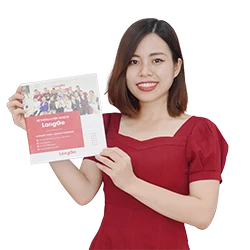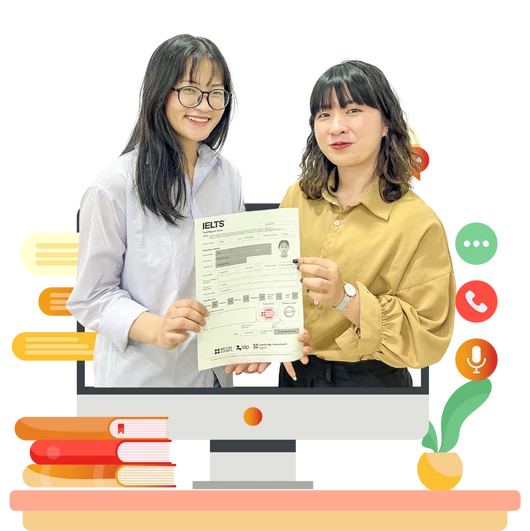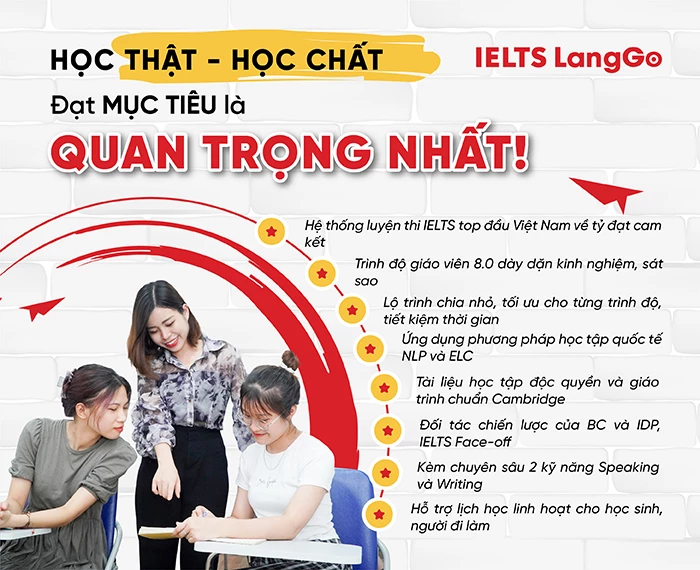


Tự học IELTS reading không phải là quá khó khăn vì phần này đã có các dạng đề rõ ràng. Cần ôn tập thật nhiều các dạng đề và luyện tập các bài đọc để nâng cao kỹ năng đọc hiểu là có thể đạt điểm cao trong phần IELTS reading.
Tại sao bằng cấp lại quan trọng đối với chúng ta đến như vậy? Hãy cùng chúng tôi tham khảo bài đọc 'The MIT factor: celebrating 150 years of maverick genius' để hiểu được tầm quan trọng của bằng cấp nhé!
Trước khi tham khảo bài đọc dưới đây thì hãy chú ý một số điều quan trọng trong khi làm các dạng câu hỏi dưới đây nhé!
* True, False, Not given:
- Luôn đọc hướng dẫn thật cẩn thận ;
- Đọc tất cả các câu hỏi một cách thật cẩn thận, cố gắng hiểu ý toàn câu thay vì tìm keywords. Để ý các từ quan trọng ví dụ như some hoặc always.
- Cố gắng nghĩ thêm đến những từ đồng nghĩa - synonyms ở trong bài văn. Điều này sẽ giúp cho bạn xác định đúng được phần chính xác chứa đáp án;
- Nối câu trả lời của bạn với phần chứa thông tin trong bài văn;
- Tập trung cao vào câu hỏi thêm1 lần nữa và đọc phần chứa thông tin để xác định đáp án. Nhớ rằng ý nghĩa cần phải đúng chính xác với thông tin trong bài;
- Gạch chân ra từ chứa thông tin để giúp cho bạn chọn đáp án. Việc này cũng giúp cho việc kiểm tra lại sẽ dễ dàng hơn;
- Nếu như không thể tìm thấy được thông tin, đánh dấu là ‘not given’và sang câu tiếp theo;
- Nếu như bạn không thực sự chắc chắn câu trả lời hoặc không tìm thấy câu trả lời, đánh dấu là ‘not given’.
* Short answer question:
-Câu hỏi được thực hiện theo trật tự bài đọc nên bạn cứ thế mà trả lời câu hỏi kế tiếp.
- Đọc câu hỏi trước rồi đọc đoạn văn sau , hiểu rõ ý của câu hỏi rồi mới tìm câu trả lời.
- Chú ý kỹ hướng dẫn ‘NO MORE THAN THREE WORDS AND/OR A NUMBER.’
- Câu trả lời không nhất thiết là phải đúng chính xác ngữ pháp, chỉ cần đúng ý câu hỏi là được.
- Lấy thông tin ra từ bài đọc, không được trả lời bằng ý kiến cá nhân.
- Mẹo nhỏ nhưng không phải là tất cả: Keywords trong câu hỏi thường là Nouns (danh từ) hoặc Noun phrases (cụm danh từ) nên bạn có thể chú ý hơn nên tìm phần này trước.
- Khi đã có keywords, luôn nhớ đến từ đồng nghĩa - synonyms và paraphrases để tìm thông tin.
* Note completion:
- Đọc hướng dẫn để biết được số lượng từ cần điền trong câu hỏi.
- Tìm và gạch chân những từ khóa có trong câu hỏi.
- Đọc kỹ những thông tin bên cạnh khoảng trống các từ cần điền.
- Tìm thông tin trong bài đọc giống với thông tin của ghi chú để biết được thông tin liên quan đến từ cần điền, hãy chú ý vào những tên riêng viết hoa để tìm được đoạn văn trong bài đọc chính xác nhất.
- Đọc kỹ câu có chứa các từ khóa tương ứng trong bài đọc.
- So sánh giữa câu hỏi và câu chứa thông tin xem chúng có đúng nghĩa với nhau không
- Kiểm tra xem từ hoặc cụm từ mình chọn có hòa hợp về mặt ngữ pháp và đúng chính tả hay chưa trước khi chuyển sang làm phần khác.
Bây giờ hãy cùng luyện tập lần lượt các dạng câu hỏi giống như khi đi thi thật bằng cách làm các bài tập dưới đây nhé!
Reading Passage
| The MIT factor: celebrating 150 years of maverick genius  The musician Yo-Yo Ma’s cello may not be the obvious starting point for a journey into one of the world’s great universities. But, as you quickly realise when you step inside the Massachusetts Institute of Technology, there’s precious little going on that you would normally see on a university campus. The cello, resting in a corner of MIT’s celebrated media laboratory — a hub of creativity — looks like any other electric classical instrument. But it is much more. Machover, the composer, teacher and inventor responsible for its creation, calls it a ‘hyperinstrument’, a sort of thinking machine that allows Ma and his cello to interact with one another and make music together. ‘The aim is to build an instrument worthy of a great musician like Yo-Yo Ma that can understand what he is trying to do and respond to it,’ Machover says. The cello has numerous sensors across its body and by measuring the pressure, speed and angle of the virtuoso’s performance it can interpret his mood and engage with it, producing extraordinary new sounds. The virtuoso cellist frequently performs on the instrument as he tours around the world. Machover’s passion for pushing at the boundaries of the existing world to extend and unleash human potential is not a bad description of MIT as a whole. This unusual community brings highly gifted, highly motivated individuals together from a vast range of disciplines, united by a common desire: to leap into the dark and reach for the unknown. The result of that single unifying ambition is visible all around. For the past 150 years, MIT has been leading the world into the future. The discoveries of its teachers and students have become the common everyday objects that we now all take for granted. The telephone, electromagnets, radars, high-speed photography, office photocopiers, cancer treatments, pocket calculators, computers, the Internet, the decoding of the human genome, lasers, space travel ... the list of innovations that involved essential contributions from MIT and its faculty goes on and on. From the moment MIT was founded by William Barton Rogers in 1861, it was clear what it was not. While Harvard stuck to the English model of a classical education, with its emphasis on Latin and Greek, MIT looked to the German system of learning based on research and hands-on experimentation. Knowledge was at a premium, but it had to be useful. This down-to-earth quality is enshrined in the school motto, Mens et manus - Mind and hand - as well as its logo, which shows a gowned scholar standing beside an ironmonger bearing a hammer and anvil. That symbiosis of intellect and craftsmanship still suffuses the institute’s classrooms, where students are not so much taught as engaged and inspired. Take Christopher Merrill, 21, a third-year undergraduate in computer science. He is spending most of his time on a competition set in his robotics class. The contest is to see which student can most effectively program a robot to build a house out of blocks in under ten minutes. Merrill says he could have gone for the easiest route - designing a simple robot that would build the house quickly. But he wanted to try to master an area of robotics that remains unconquered — adaptability, the ability of the robot to rethink its plans as the environment around it changes, as would a human.‘I like to take on things that have never been done before rather than to work in an iterative way just making small steps forward,’ he explains. Merrill is already planning the start-up he wants to set up when he graduates in a year’s time. He has an idea for an original version of a contact lens that would augment reality by allowing consumers to see additional visual information. He is fearful that he might be just too late in taking his concept to market, as he has heard that a Silicon Valley firm is already developing something similar. As such, he might become one of many MIT graduates who go on to form companies that fail. Alternatively, he might become one of those who go on to succeed in spectacular fashion. And there are many of them. A survey of living MIT alumni* found that they have formed 25,800 companies, employing more than three million people, including about a quarter of the workforce of Silicon Valley. What MIT delights in is taking brilliant minds from around the world in vastly diverse disciplines and putting them together. You can see that in its sparkling new David Koch Institute for Integrative Cancer Research, which brings scientists, engineers and clinicians under one roof. Or in its Energy Initiative, which acts as a bridge for MIT’s combined work across all its five schools, channelling huge resources into the search for a solution to global warming. It works to improve the efficiency of existing energy sources, including nuclear power. It is also forging ahead with alternative energies from solar to wind and geothermal, and has recently developed the use of viruses to synthesise batteries that could prove crucial in the advancement of electric cars. In the words of Tim Berners-Lee, the Briton who invented the World Wide Web, ‘It’s not just another university. Even though I spend my time with my head buried in the details of web technology, the nice thing is that when I do walk the corridors, I bump into people who are working in other fields with their students that are fascinating, and that keeps me intellectually alive.’ Adapted from the Guardian * people who have left a university or college after completing their studies there |
Questions 1-5
Do the following statements agree with the information in the reading passage?
Write
TRUE if the statement agrees with the information
FALSE if the statement contradicts the information
NOT GIVEN if there is no information on this
1 ………………. The activities going on at the MIT campus are like those at any other university.
2 ………………. Harvard and MIT shared a similar approach to education when they were founded.
3 ………………. The school motto was suggested by a former MIT student.
4 ………………. MIT’s logo reflects the belief that intellect and craftsmanship go together.
5 ………………. Silicon Valley companies pay higher salaries to graduates from MIT.
Questions 6-9
Complete the notes below.
Choose NO MORE THAN TWO WORDS from the passage for each answer.
| Christopher Merrill - student at MIT Degree subject: 6 ………………. Competition: to 7 ………………. the automated construction of a house Special focus on: the 8 ………………. of robots Future plans: to develop new type of 9 ………………. |
Questions 10-13
Answer the questions below.
Choose NO MORE THAN TWO WORDS from the passage for each answer.
10 What proportion of workers at Silicon Valley are employed in companies set up by MIT graduates? ……………….
11 What problem does MIT’s Energy Initiative aim to solve? ……………….
12 Which ‘green’ innovation might MIT’s work with viruses help improve? ……………….
13 In which part of the university does Tim Berners-Lee enjoy stimulating conversations with other MIT staff? ……………….
ĐÁP ÁN
1. FALSE
2. FALSE
3. NOT GIVEN
4. TRUE
5. NOT GIVEN
6. computer science
7. program
8. adaptability
9. contact lens
10. one quarter
11. global warming
12. electric cars
13. corridors



ĐẶT LỊCH TƯ VẤN MIỄN PHÍ LỘ TRÌNH Săn ƯU ĐÃI lên tới 12.000.000đ